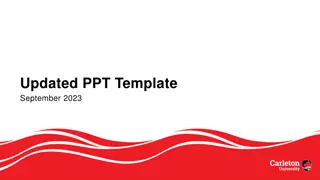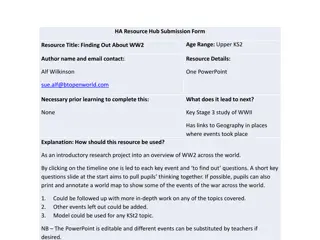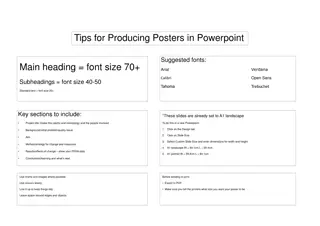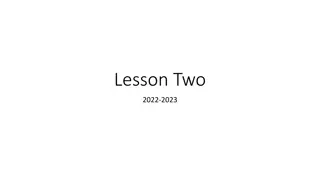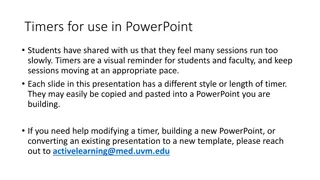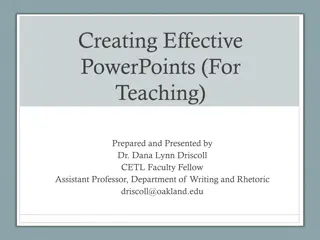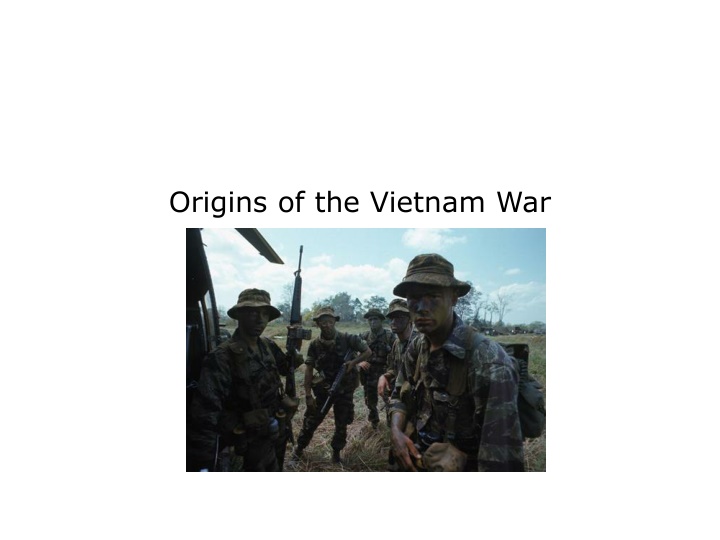
Origins of the Vietnam War and U.S. Involvement Explained
Explore the origins of the Vietnam War, Ho Chi Minh's leadership, the Domino Theory, Dien Bien Phu, and the Gulf of Tonkin Resolution. Learn why the United States got involved in Vietnam, the role of French colonial governments, and Ho Chi Minh's fight for Vietnam's independence from colonial rule. Discover how Eisenhower's Domino Theory influenced U.S. foreign policy towards Vietnam and the events leading to the French defeat at Dien Bien Phu.
Download Presentation

Please find below an Image/Link to download the presentation.
The content on the website is provided AS IS for your information and personal use only. It may not be sold, licensed, or shared on other websites without obtaining consent from the author. If you encounter any issues during the download, it is possible that the publisher has removed the file from their server.
You are allowed to download the files provided on this website for personal or commercial use, subject to the condition that they are used lawfully. All files are the property of their respective owners.
The content on the website is provided AS IS for your information and personal use only. It may not be sold, licensed, or shared on other websites without obtaining consent from the author.
E N D
Presentation Transcript
Terms and People Ho Chi Minh a Vietnamese leader who demanded Vietnam s independence from France domino theory the idea that if a nation fell to communism, its closest neighbors would follow Dien Bien Phu a French military base besieged by Vietminh troops until the French surrendered
Terms and People (continued) Southeast Asia Treaty Organization (SEATO) defensive alliance aimed at preventing communist aggression in Asia Vietcong South Vietnamese guerrilla fighters supported by communists in North Vietnam Gulf of Tonkin Resolution 1964 congressional resolution that authorized President Johnson to commit American troops to South Vietnam and fight a war against North Vietnam
The United States became involved in Vietnam for several reasons. The United States wanted France as an ally in the Cold War. The United States also wanted to support any government that was fighting communism.
French colonial governments had ruled most of Indochina since the 1800s. The French exploited Indochina s wealth by owning plantations, claiming mineral rights, and imposing high taxes.
Vietnamese leader Ho Chi Minh worked to free Vietnam from colonial rule. Unable to get support from western nations, he embraced communism and received support from Soviet communists.
In 1954, President Eisenhower introduced the domino theory, which said that if Vietnam became communist, its closest neighbors would follow. If communism spread throughout the region, Eisenhower feared, it could threaten Japan, the Philippines, and Australia.
Despite U.S. financial support, the French were defeated by Vietminh forces at Dien Bien Phu. The Vietminh hammered at French forces and laid siege to the base for 55 days. After suffering more than 15,000 casualties, the French surrendered on May 7, 1954. In the peace accord that followed, Cambodia, Laos, and Vietnam gained independence from France.
Vietnam was divided into two countries. Ho Chi Minh s communist government ruled North Vietnam. An anticommunist government, supported by the United States, ruled South Vietnam.
South Vietnam s president, Ngo Dinh Diem, was not a popular leader. A group of rebel guerilla fighters formed the National Liberation Front (NLF) to oppose the Diem government and unite Vietnam under communist rule.
The United States supported South Vietnam in several ways. formed the Southeast Asia Treaty Organization, which opposed communism gave economic and military aid sent Special Forces soldiers to advise South Vietnamese troops
In 1961, President Kennedy sent Special Forces troops to help fight the Vietcong, the guerilla fighters of the National Liberation Front. The Diem government remained unpopular, however, and the Kennedy administration worked behind the scenes to remove Diem from power.
In 1964, President Johnson faced his first crisis in Vietnam. He then asked Congress to authorize the use of force to defend U.S. troops. North Vietnam attacked an American destroyer in the Gulf of Tonkin. Johnson ordered an airstrike against North Vietnam. In response, Congress passed the Gulf of Tonkin Resolution.
It allowed him to commit U.S. troops to South Vietnam. The Gulf of Tonkin Resolution gave Johnson tremendous war powers. It enabled him to fight a war against North Vietnam without asking Congress for a declaration of war.








